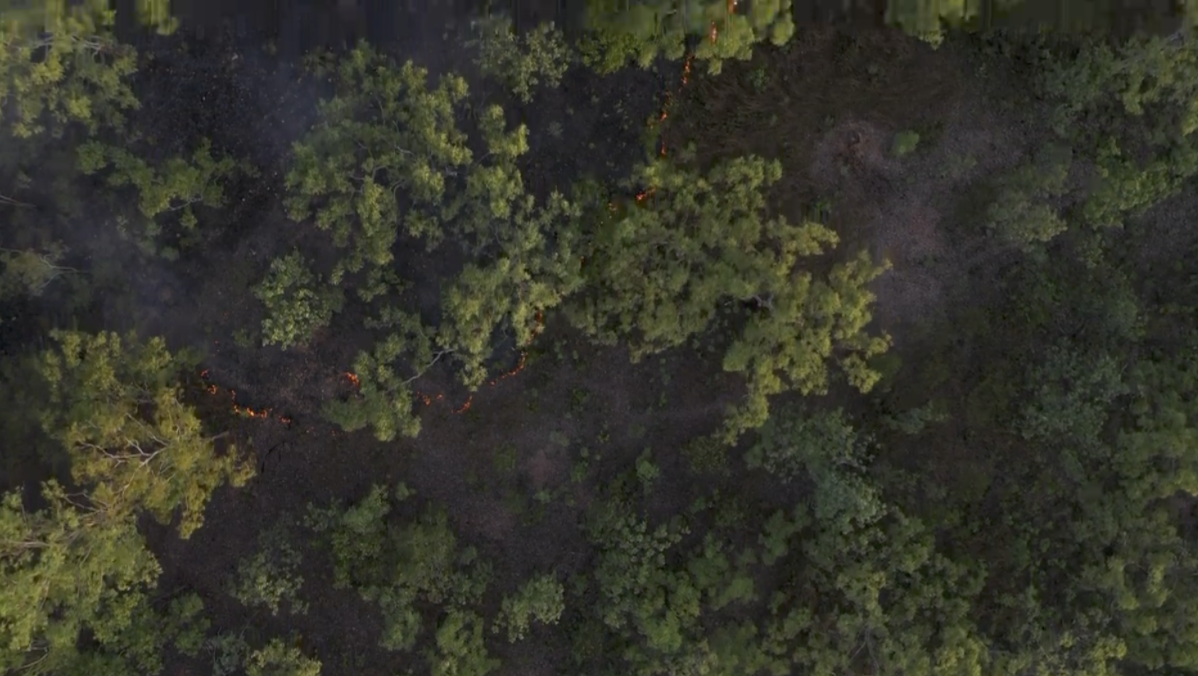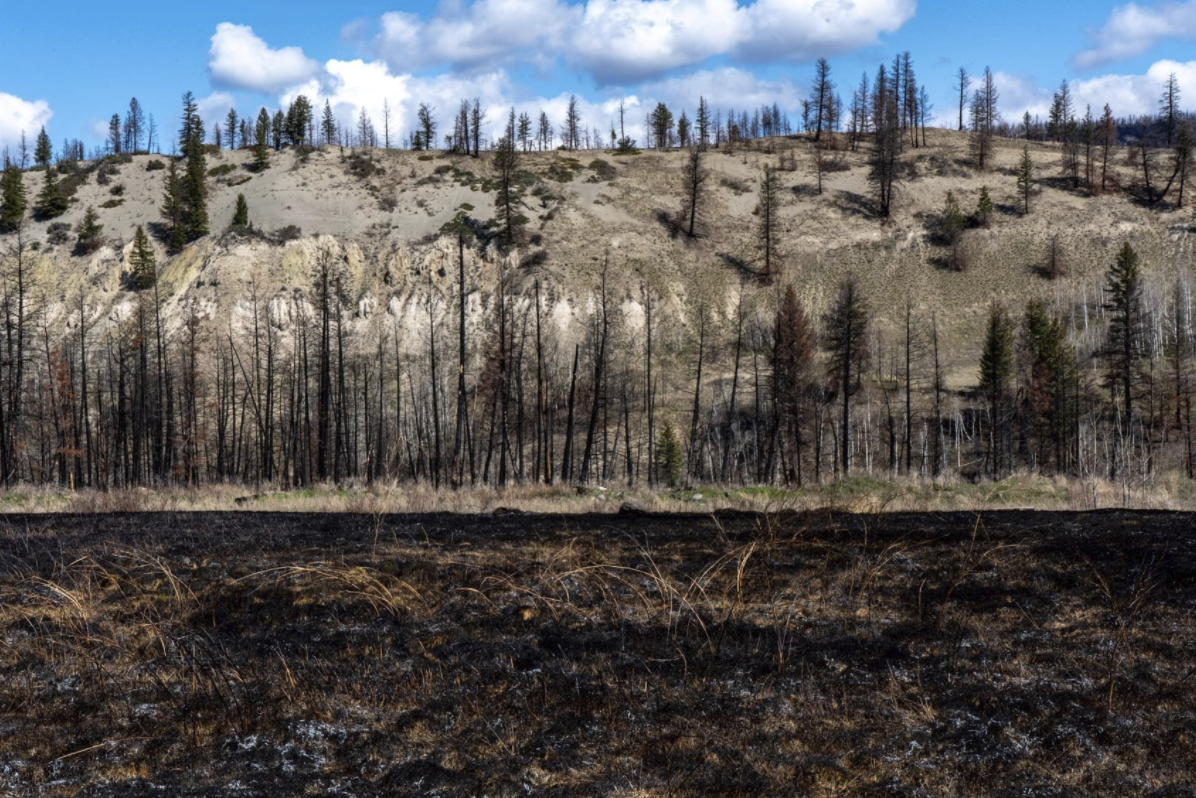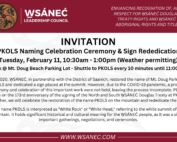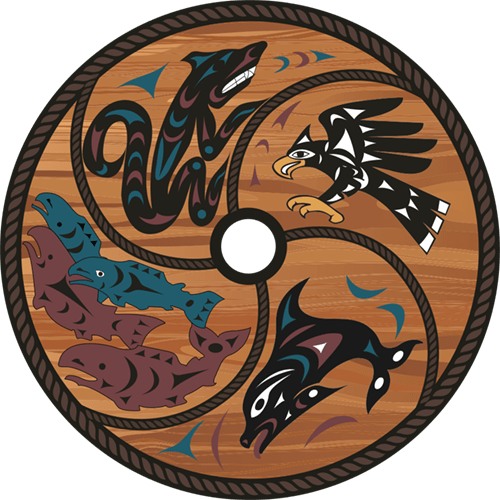Multiple W̱SÁNEĆ youths are now wildland fire training course certified; a step in reclaiming the ancient practice of working with fire as a way to care for the land in W̱SÁNEĆ territory.
Shown above: Indigenous-led prescriptive, or defensive burns in Australia. Image courtesy of the New York Times.
With a cultural or prescribed burn tentatively scheduled for the first week of October, weather depending, fire training course graduate Tiffany Joseph explains:
“Our first burn will take place on an Islet near Sidney Island Spit, which allows for assurance that the fire can’t spread. We were waiting for the rain to come as the land was extra dry. Then we are waiting for a few days of dry weather.”
This Indigenous-led prescriptive burn would be one of just a few carried out over the last few years on W̱SÁNEĆ territory, although the hope is it will not be the last.
As BC fires broke records in 2017, with over 1.3 million hectares scorched, the efficacy of prescribed burns has become more understood as an effective defence mechanism against the severity and frequency of the wildfires. This is something Indigenous groups have known for thousands of years, but only now are settlers catching up.
UBC Faculty of Forestry researcher Kira Hoffman shares,
“The big issue is that they (the colonial government) are not considering the relevant experience and knowledge of Indigenous Peoples, and the lifelong practice of understanding fire.”
The Indigenous understanding and way of working with fire are shown to be extremely effective. Fire prevention programs involving Indigenous-led prescriptive burns have cut destructive wildfires in half and reduced greenhouse-gas emissions from wildfires in the north of Australia by 40 percent.
On the improvements, Bill Gammage, a professor at the Australian National University in Canberra shares “We most certainly should learn to burn Aboriginal-style. Our firefighters have quite good skills in fighting fires. But for preventing them, they are well short of what Aboriginal people could do.”
Closer to home, several Indigenous groups in the Interior of BC are also reclaiming cultural burning, a practice that was declared illegal by BC’s colonial government in 1874, via the Bush Fire Act of 1874 in B.C.
In the Chilcotin Plateau shown above, outside of what is now called Williams Lake, the record-breaking 2017 fires burned more than 500,000 hectares surrounding the Tsilhqot’in Nation’s communities. Image courtesy of the Narwhal.
During the 2017 fires, the Tsilhqot’in Nation became the first Indigenous nation in Canadian history to exercise its jurisdiction and governance by refusing to leave during a recommended evacuation order. Instead, Tsilhqot’in fire crews successfully defended the homes of the 250 Yunesit’in community members with the help of provincial wildfire crews.
That experience prompted the creation and signing of the first-of-its-kind Collaborative Emergency Management Agreement. Signed between the federal, provincial and Tsilhqot’in Nation governments, the three parties will work together to identify best practices and build on the emergency management capacity of the Tsilhqot’in communities.
In 2019 Australian Indigenous fire practitioner Victor Steffensen was brought in as part of a pilot project to bolster a traditional fire management program for Tsilhqot’in lands and the Dasiqox Tribal Park area. The project is being led by the Yunesit’in and Xeni Gwet’in First Nations, communities within the Tsilhqot’in Nation.
In Penticton, protocols around traditional burning are deeply embedded in the captikw, the oral storytelling laws that guide the values and ethics of the syilx people.
“We have names for everything when it comes to doing burns,” says sxʷuxʷiyaʔ, the Penticton Indian Band’s project manager for the Natural Resource Department.
“Whenever we get referrals for prescripted fuel reduction burns or prescribed burns we inform B.C. Wildfire Services [BCWS] that this is syilx territory and we manage our land with fire and we have a very developed process for burn prescriptions, fuel reductions, and fuel modifications and treatment,” he says.
“Fire is a tool our people have used for thousands and thousands of years to manage our timxw [life force], our lands, our animals, our berries,”
Back in W̱SÁNEĆ territory, Tiffany Joseph, one of the Fire Training attendees agrees,
“Fire brings nutrition to the soil. It helps the bushes come back lusher, with more food for the animals and people. There is so much debris everywhere; it looks wilder now than when our people were stewarding. We were tending the land, well beyond farming and gardening, we maintained a whole ecosystem. It’s important for settlers and our people to understand. It’s a myth that the land was untouched – we were in relationship with it, engaging in a respectful and sacred way. ”
This beginning of a resurgence of the old ways of being isn’t without its challenges. Recovery of ancient knowledge takes time. Joseph continues,
“We have had a few conversations – to look for people in the community who have seen or grown up with controlled burns. Hopefully, we can get some knowledge from them. Parks Canada staff and people who grew up without this tradition seem hesitant about working with fire.”








